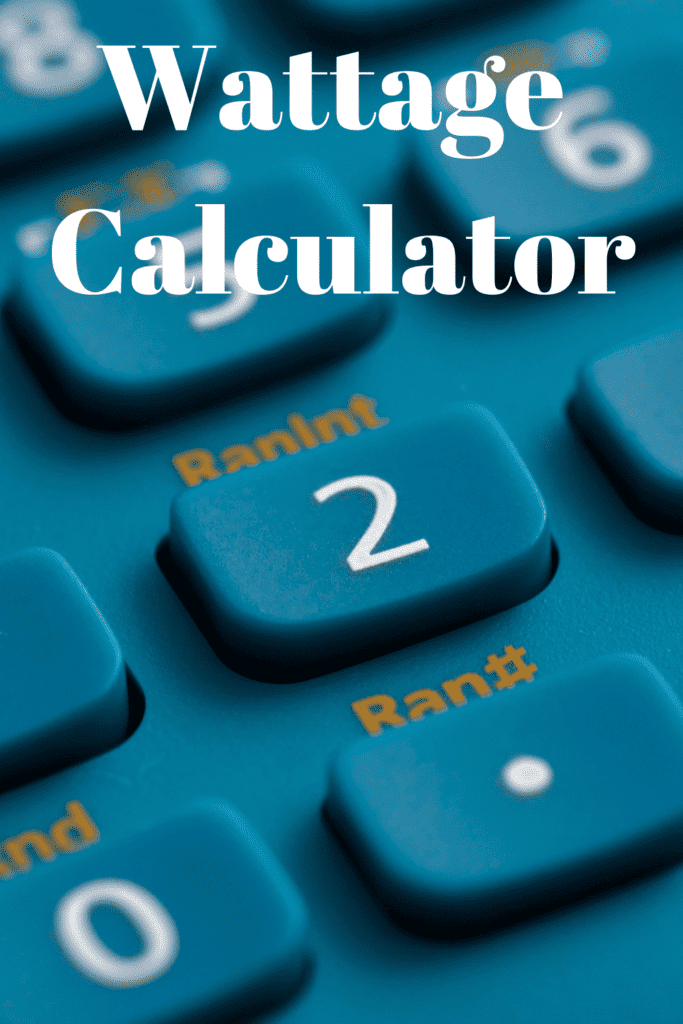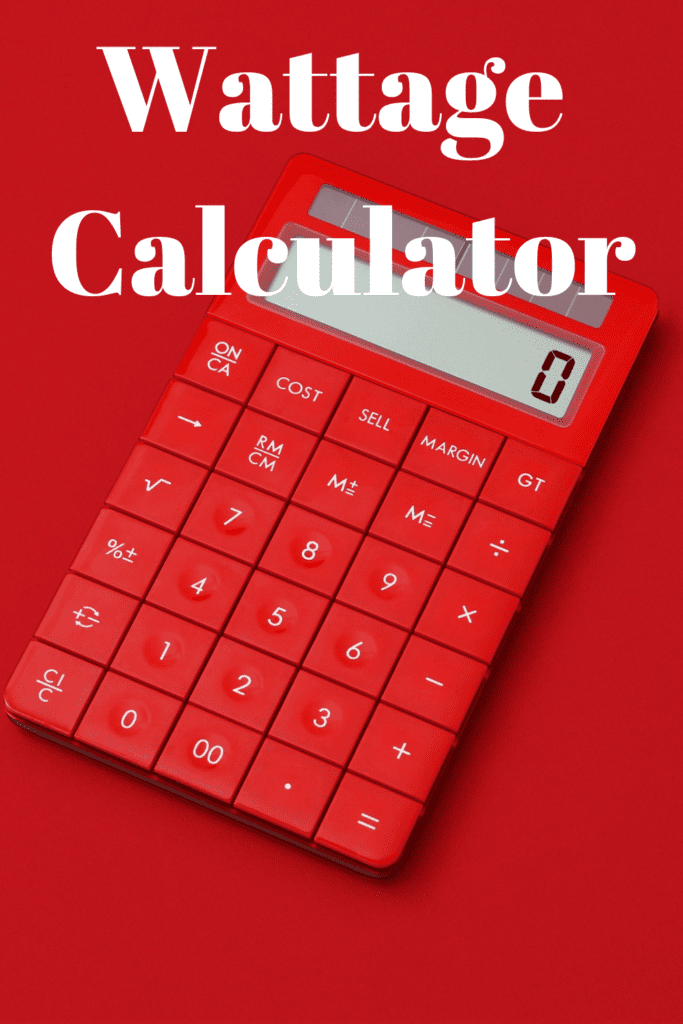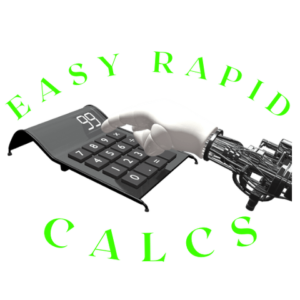Wattage Calculator Overview
Wattage Calculator
Wattage Calculator – Find Out How Much Power a Resistor Dissipates
Watts measure how much electrical energy a device uses; within an electric circuit, this amount varies based on both voltage and current.
Ohm’s law provides an efficient method for calculating power (watts). Furthermore, utility companies typically offer monitoring devices that will show how much electricity has been consumed over time by individual devices or over time using Ohm’s law as the basis.
Voltage
Voltage measures the difference in electric potential or pressure between two points within an electrical circuit, and this calculator makes it easy to convert them to amps and watts using an easy multiplication formula. Simply enter any value in any of the three fields before clicking calculate!

Watts measure the rate at which electricity is being consumed. Understanding an appliance’s energy use and helping to lower your electric bill are two advantages to knowing its wattage; many websites provide charts and calculators for estimating it; however, their information may not always be precise because each appliance utilizes different amounts of power depending on its setting (such as when used at high speed or low speed). Therefore, the only accurate way to find its exact wattage measurement is using a wattage meter.
Find several online resources that allow you to calculate watts by providing voltage and current readings of an appliance. Most of these calculators use Ohm’s law, which states that power (P) equals voltage squared divided by resistance of circuit in ohms; however, this formula fails when applied to AC circuits because it doesn’t account for power factor. In order to accurately determine an appliance’s wattage you should instead utilize its real power equation:
Discover more about electrical units by visiting our Calculators, Converters and Tools page. You will find information on volts and amps calculators as well as how to calculate power, resistance and more. Remember that more resistance means it takes longer for current to flow; so keeping all wiring in good condition and not overloading it will prevent fires and other hazards in your home from happening. Likewise, using energy efficient appliances may reduce electric bills; alternative sources may offer further savings such as solar power.
Current
When trying to determine how much power an electrical device consumes, the first step should be identifying both amps (or amperes) and volts. From here you can use a simple multiplication formula to calculate wattage; square current amperes multiplied by voltage in volt-ampere units will give you your final wattage number. Understanding wattage usage will allow you to lower energy consumption while saving money on your electricity bill.

Electric current, or amperes (amps), measures the amount of electricity passing through a wire in any given period and is measured in amperes (amps). Voltage measures the difference in electric potential or pressure between two points on a wire; its units of measurement are known as volt-amperes or volt-VA units. Wattage, the rate at which electrical energy can be transferred across, equals current (in amps) multiplied by voltage (volt-amperes or volt-VA).
When working on an electric circuit, checking power values with either your multimeter or this free online tool is simple and quick. Simply enter resistance and voltage values before clicking “calculate”, and your results will be instantly delivered to you.
Calculating Wattage with Power Factor. This approach takes into account how efficient an electrical appliance is, which may impact on your energy bill. Therefore, for accurate results it is recommended to use an actual Wattage Meter which plugs directly into appliances – giving an accurate reading.
This calculator not only converts amps to watts but can also help determine the power dissipated by resistors. Simply input any two of the following values – voltage across resistor and current or resistance in ohms and click calculate; compare this result with its power rating on its label; the higher its wattage is the more energy it can handle; this tool can assist you in making informed decisions when purchasing new electrical devices or adding solar panels into your home.
Resistance
The Wattage Calculator is an invaluable tool to assist in estimating how much power a resistor dissipates. Simply enter any two values, press calculate, and you’ll get instantaneous results! Use it with any type of resistor – from complex ones with many turns of wire and high resistance values all the way down to simple ones with low values – providing your units for voltage, current and resistance are consistent; for example volts should always equal amperes, while watts must either equal either amps or watts when measuring resistance values!
Voltage and current are the two primary elements of an electrical circuit, and in order to understand their relationship it’s vital that one knows their units. Voltage measures the force or pressure of electricity which is measured in volts while current is measured in amperes (amps). When combined together you can obtain the wattage of any device.
To accurately ascertain the wattage of a resistor, one must know its resistance value in ohms as well as its voltage from power supply and current passing through it in amps. Once these numbers have been obtained, multiply these by P = I2 * R, where I stands for current in amps and R is resistance in ohms.
The Wattage Calculator will automatically convert your numbers into their appropriate units, making your results easy to read and interpret. Furthermore, you can alter the unit multiplier if you prefer working in other units such as KiloWatts(r) MegaWatts(r) MicroWatts(r) etc.
If you are planning a build for your vaping hardware, this calculator is an invaluable resource. It allows you to calculate the wattage requirements of your build, while making sure it is safe for battery, coil and mechanical mod. Input all components for accurate calculations; doing so will prevent overcharging or burning out in high-powered builds.
Power
Watts are used to measure the energy consumed by an electrical device or circuit, and are calculated using Ohm’s law: voltage times current divided by resistance equals power. Voltage represents electrical potential difference or pressure while current (in amps) measures flow rate. Watts represent energy used by electrical devices and circuits and should be understood in relation to voltage (volts). Current (amps) measures rate of flow. Voltage represents electric potential difference or pressure while ampere (Am) measures rate at which electricity flows through an appliance or circuit while Ohm’s law can help calculate power as it equals voltage times current divided by resistance = power consumed by appliances/circuits/circuits/circuits.
Wattage calculators can be an invaluable resource in calculating how many watts your electronics and appliances consume, as well as which devices are the most energy-efficient and which may be wasting energy or producing excessive heat – saving both money and carbon footprint in the process.
Most appliances feature their wattage either stamped on their bottom or back, or listed in their owner’s manual or specification sheet. But its wattage may change depending on which setting is chosen – for instance, setting your radio at high volume requires more power than setting it to low volume, so the calculator below takes this into account by using P=3Ax110V=330W as its formula (where P stands for Power).
As part of understanding your energy use, it’s also crucial that you are familiar with how your utility company measures it. Most utilities charge per kilowatt hour – an indicator of how much electricity has been consumed over a certain timeframe – which you can calculate by multiplying wattage with usage hours per year.

Many appliances continue consuming electricity even when not in use, known as standby consumption. According to estimates, the average household wastes an estimated 500 kilowatt hours annually through this practice. To combat it, turn off or unplug appliances when not being used or use wattage monitors to identify how much power electronic equipment uses; you could then switch out in favor of more energy efficient models.
